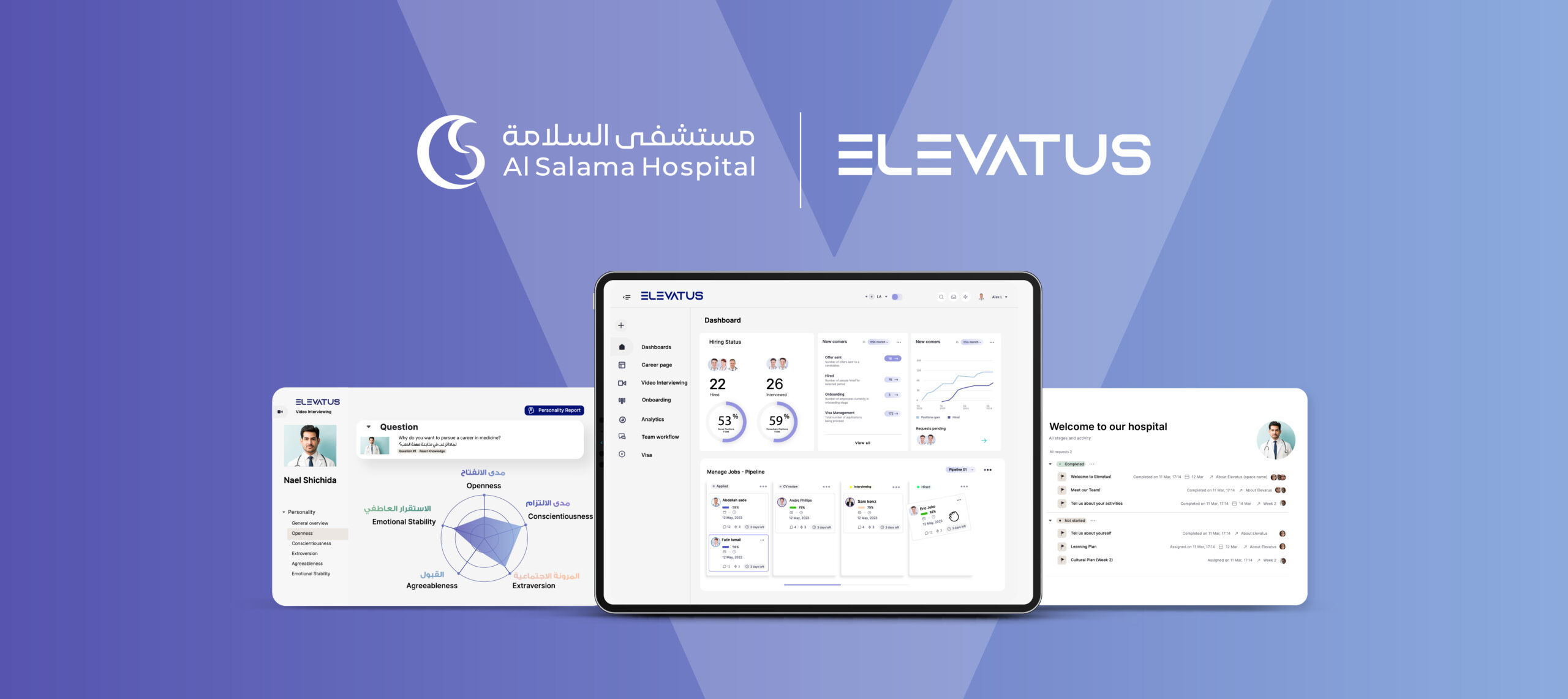
HR Resources
Job Crafting Unveiled: A Roadmap to Top-Performer Loyalty and Long-Term Triumph
June 19, 2023



Kiran Kazim
Content Writer
Do you ever feel like your job is holding you back from reaching your full potential? Do you crave more autonomy and creativity in your work? You’re not alone.
In fact, a recent study found that over 70% of employees desire some level of job crafting – the process of redefining and customizing one’s work tasks, relationships, and responsibilities to better align with personal values and goals.
While job crafting can lead to increased engagement, productivity, and retention among top-performers, there are also potential downsides to consider. For example, too much job crafting can lead to burnout or conflict with coworkers and managers who may not see eye-to-eye on new responsibilities or priorities.
To retain top-performers for the long-term, it’s important for organizations to implement strategies that balance the pros and cons of job crafting while promoting employee freedom and fulfillment.
Exploring Job Crafting and Nurturing Employee Loyalty


Job crafting is a process where employees actively reshape and modify their job roles to better suit their strengths, interests, and preferences. It involves employees taking initiative and making adjustments to their tasks, relationships, and perceptions of their work to enhance job satisfaction and performance. By customizing their jobs, individuals seek to align their responsibilities with their personal values and aspirations.
So, if you want to ensure long-term success, it’s essential that you retain your top-performers. And one way to do this is through job crafting – the process of employees customizing their own job roles to better align with their strengths and interests.
While there are upsides and downsides to job crafting, understanding how it can benefit employee retention is crucial for developing effective strategies for long-term success.
Championing the Heroes: Securing Long-Term Triumph with Stellar Talent Retention
Keeping your best employees is crucial to the sustained growth and prosperity of any organization. Not only does retaining top-performers save time and money on recruitment and training, but it also ensures that the company maintains a high level of productivity, efficiency, and innovation.
Losing key employees can lead to a decrease in morale and motivation among remaining staff, as well as damage to the company’s reputation. This is where job crafting comes in as an effective strategy for employee retention.
Benefits of job crafting include increased job satisfaction, engagement, and autonomy for employees. By allowing individuals to shape their roles according to their strengths, interests, and values, organizations can create a sense of purpose and fulfillment that goes beyond financial compensation.
Job crafting also promotes creativity and innovation by encouraging employees to think outside the box and bring new ideas to the table. However, there are also potential disadvantages of job crafting such as role ambiguity or conflict with organizational goals if not properly managed.
With careful planning and communication between managers and employees, these issues can be addressed proactively.
Now, we’re moving on to types of job crafting.
Discover the Diverse Art of Job Crafting!
If you’re interested in job crafting, it’s important to know that there are three main types: task crafting, relational crafting, and cognitive crafting.
- Task crafting involves changing the content or scope of your tasks to better align with your skills and interests.
- Relational crafting involves adjusting the nature and frequency of interactions with others in the workplace.
- Finally, cognitive crafting is all about reinterpreting tasks or finding new meaning in them.
Understanding these different approaches can help you tailor your job craft strategy for maximum effectiveness.
Unlock Your Superpowers with Task Crafting
You can customize your tasks to better fit your strengths and interests, like a tailor altering a suit to fit the unique shape of a person’s body. This is called task crafting, one of the types of job crafting that allows you to modify how you do your work. By doing this, you can reduce or eliminate tasks that drain your energy and replace them with ones that excite you.
Task crafting also allows you to take on new responsibilities that challenge you without feeling overwhelmed. The benefits of job crafting are numerous: it leads to higher job satisfaction, greater productivity, and employee engagement. However, there are also potential downsides such as overworking and burnout if not managed properly.
It’s important to find a balance between pushing yourself out of your comfort zone while still maintaining a healthy workload. With task crafting though, it’s easier to achieve this balance because you have more control over what you’re doing in your role.
Next up is relational crafting, which focuses on modifying how we interact with others at work.
Harness the Power of Relational Crafting for Success
To truly excel in your role, it’s essential to consider how you interact with others at work through the technique of relational crafting. What is job crafting?
Relational crafting involves intentionally building and strengthening relationships with co-workers, managers, and customers to enhance your work experience and improve overall performance. Here are four ways to engage in relational crafting:
1. Focus on creating authentic connections: Take a genuine interest in getting to know your colleagues beyond just their job titles or duties.
2. Seek out mentors or role models: Find someone who inspires you and seek guidance from them on how to build successful working relationships.
3. Build a positive communication style: Communicate clearly, respectfully, and confidently while also being open to feedback from others.
4. Foster collaboration: Look for opportunities to collaborate with others on projects or tasks that align with your strengths.
By taking these steps, you can create a more fulfilling work environment for yourself while also contributing positively to the workplace culture.
As you continue exploring various techniques of job crafting, it’s important not to forget about the power of cognitive crafting and its potential impact on your long-term success in the organization.
And Finally, Unleash Cognitive Crafting for Limitless Success
Now it’s time to focus on cognitive crafting, where you can actively shape your mindset and perceptions to improve your work experience and increase your value in the organization. By changing the way you think about your work, you can elevate your performance and make a bigger impact on the company.
Instead of focusing on what you can’t control, like difficult colleagues or tight deadlines, try to reframe these challenges as opportunities for growth and learning. When you shift your perspective from limitations to possibilities, you open yourself up to new ideas and innovative solutions.
This type of cognitive crafting allows you to take ownership of your work experience and create meaning in even the most mundane tasks. By investing in this practice, not only will you benefit personally but also become more valuable as an employee.
With a positive attitude and creative thinking skills, you’ll be well-positioned for success within the organization.
Fueling Top-Performers’ Loyalty for Unstoppable Success


You’ll be pleased to know that job crafting can have a positive impact on retaining top-performers. By allowing employees to have more control over their work, they experience increased job satisfaction and engagement.
This enhanced sense of autonomy and ownership also leads to improved work-life balance. This, in turn, boosts motivation and productivity.
Boost Job Bliss and Supercharge Engagement
Boosting how much you love your work and feel invested in it is a potential perk of making changes to your role. When you have the ability to customize your job responsibilities to better align with your interests and skills, you’re more likely to feel fulfilled by the work you do. This increased job satisfaction can lead to greater engagement with your tasks, as well as improved overall performance.
By feeling more connected to your job, you may also be less likely to seek out alternative employment opportunities. In addition, having control over certain aspects of your job can provide a sense of empowerment that’s often lacking in traditional work structures. Job crafting allows you to take ownership of certain tasks or projects, which can enhance both your confidence and motivation levels.
Feeling like you have autonomy within your role can also encourage creativity and innovation, leading to new ideas and approaches that benefit not only yourself but the company as a whole. This enhanced sense of autonomy and ownership will be explored further in the subsequent section about its impact on retaining top-performers.
Empowerment Unleashed with Autonomy and Ownership
By taking control of certain tasks and projects, job crafting can provide a greater sense of ownership and empowerment. This may lead to more creativity, innovation, and ultimately positive outcomes for both the individual and the organization. When you have the freedom to shape your role in a way that suits your strengths, interests, and goals, you’re more likely to feel invested in your work. This newfound sense of autonomy can be incredibly liberating as it allows you to work on things that truly matter to you.
Here are four ways enhanced autonomy through job crafting could benefit you:
1. You get to choose how you spend your time: By customizing your workload according to what energizes and motivates you, rather than just doing what is expected of you, there will be less drag on your energy levels.
2. You become more accountable: As the sole owner of specific projects or responsibilities within the organization, not only do you have complete authority over your work but also take full responsibility for its outcome.
3. You gain new skills: Job crafting often requires individuals to step out of their comfort zone by taking on new roles or learning new skills.
4. You create a stronger sense of purpose: By defining what aspects of an existing role excite you most, you can restructure your job around those areas.
This increased sense of autonomy can also lead to improved work-life balance by giving individuals more control over when and how they work. As such, it’s important for organizations to encourage job crafting as part of their retention strategy if they want top-performers who are engaged with their work long-term.
Work-Life Bliss Amplified with Enhanced Balance
If you’re looking for a way to achieve a better work-life balance and gain more control over your schedule, exploring the benefits of job crafting could be the game-changer you’ve been searching for.
Job crafting involves taking an active role in shaping your job responsibilities, tasks, and relationships with colleagues to align them with your strengths and values. By doing so, you can increase your sense of autonomy and ownership over your work, reduce stress levels caused by conflicting demands or boredom, and enhance your overall well-being.
One way to craft your job for better work-life balance is by adjusting the time spent on different types of tasks. For example, if you find that administrative duties take up too much of your day and leave little time for creative projects or personal pursuits outside of work hours, you could try delegating some of those tasks to a colleague who enjoys them more or finding ways to automate them.
By freeing up some mental space and time in this way, you’ll be able to focus on what energizes you at work and have more leisure time for activities that recharge you outside of it. This renewed energy can also lead to increased motivation and productivity at work without burning out in the process.
Turbocharge Productivity with Unstoppable Drive
Feeling more motivated and productive at work can be achieved through job crafting, by actively shaping your responsibilities to align with your strengths and values.
This process involves taking a step back from your current job description and considering what tasks you enjoy most, what skills you excel at, and what aspects of the job give you a sense of purpose. By rearranging your workload to prioritize these elements, you’ll find that not only are you happier in your role but also more efficient.
Increased motivation and productivity are just two of the many benefits of job crafting. When employees feel empowered to shape their own roles, they become more engaged in their work and develop a deeper sense of ownership over their contributions.
Additionally, when people are able to do work they enjoy or that feels meaningful to them, they’re often willing to go above and beyond for their organizations. However, it’s important to note that there are also potential downsides to this approach.
Navigating the Pitfalls of Job Crafting


When considering the downsides of job crafting, there are several key points to keep in mind.
- Firstly, job crafting has the potential to create role ambiguity and conflicts within your team.
- Secondly, overloading yourself with too many changes can lead to burnout and decreased productivity.
- Finally, it’s important to ensure that your self-designed role is aligned with the goals of your organization to avoid any misalignment issues down the line.
Keep these factors in mind as you navigate the process of job crafting for long-term success.
Taming Role Chaos and Triumphing Over Conflicts in Job Crafting
Navigating the potential for role ambiguity and conflicts can be challenging when implementing job crafting initiatives. While allowing employees to have more autonomy in their work can promote engagement and satisfaction, it also opens up the possibility for confusion about expectations and responsibilities. This can lead to misunderstandings among team members or even with superiors, which may negatively impact productivity and morale.
To mitigate this risk, it’s important to establish clear communication channels within your team. Encourage open dialogue about roles and responsibilities so that everyone is on the same page. Additionally, provide training opportunities for employees to expand their skillsets and knowledge base, which can help them feel more confident in taking on additional tasks or responsibilities.
Finally, consider using a project management tool or other software solutions that allow for transparency in task assignments and progress updates.
As you navigate potential role ambiguity and conflicts within your organization, keep in mind that overloading employees with too many new tasks or responsibilities can also lead to burnout. In the next section, we’ll explore strategies for avoiding this issue while still fostering a culture of job crafting.
Navigating the Job Crafting Tightrope to Avoid Overload
Now that we’ve talked about the potential for role ambiguity and conflicts with job crafting, let’s discuss another possible downside: overloading and burnout.
When employees have more control over their roles and responsibilities, they may be tempted to take on too much or push themselves too hard in order to achieve their desired outcomes. This can lead to a situation where they are constantly stressed out and exhausted, which can ultimately impact their performance and overall well-being.
As an employer, it’s important to keep an eye on your team members’ workload and ensure that they are not taking on more than they can handle. Encourage them to prioritize their tasks and delegate when appropriate. And most importantly, make sure that they are taking time for self-care and relaxation outside of work hours.
By finding the right balance between autonomy and support, you can help your employees avoid burnout while still allowing them the freedom to craft their own jobs in a way that works best for them.
With all this talk about job crafting, it’s important to remember that there is such a thing as misalignment with organizational goals.
In our next section, we’ll explore how job crafting can sometimes lead employees down a path that is not aligned with the company’s overall mission and vision.
Aligning Job Crafting with Organizational Symphony for Success
Make sure you’re on the same page as your company’s vision and goals, or else your job crafting efforts may lead you down a path that doesn’t align with the bigger picture.
It’s important to have a clear understanding of what your organization stands for and where it’s headed before embarking on any job crafting endeavors. Without this alignment, you could find yourself investing time and energy into developing skills that aren’t valued by your employer or pursuing projects that don’t contribute to the overall mission.
Additionally, if you prioritize personal growth over organizational objectives, you risk becoming disconnected from the team and losing sight of what truly matters in terms of success.
Remember that successful job crafting isn’t just about fulfilling individual desires; it’s about creating value for both yourself and your organization. By keeping this in mind, you can avoid misalignments with organizational goals and ensure that your job crafting efforts are contributing to long-term success for everyone involved.
Now that we’ve explored some potential pitfalls of job crafting, let’s dive into strategies for successful implementation that will help retain top-performers within organizations.
Unleash Top-Performers with Winning Job Crafting Strategies


If you want to retain top-performing employees through job crafting, you need to promote a culture that encourages and supports it. This means providing resources, such as training and development opportunities, and regular check-ins and feedback.
Balancing autonomy with alignment is also important. Recognizing and rewarding job crafting efforts is crucial to show your appreciation for their hard work.
Building a Job Crafting Revolution in Your Workplace Culture
You can foster a workplace culture that encourages employees to customize their own roles and responsibilities, allowing them to feel more fulfilled and engaged in their work. This is also known as job crafting, which involves tailoring one’s job to better align with personal goals, strengths, and interests.
By promoting this approach, you can empower your team members to take ownership of their work and become more invested in the success of the company. To create a culture of job crafting, start by encouraging open communication between managers and employees. Encourage your team members to share their ideas for improving their roles or taking on new responsibilities that align with their interests.
Additionally, provide opportunities for cross-functional training or job shadowing so that employees can gain exposure to different areas of the business. By embracing this culture of customization, you’ll not only retain top-performers but also attract new talent who are looking for a workplace where they can truly thrive.
And speaking of thriving – providing resources and support is key to supporting your team’s long-term success.
Fueling Success with Abundant Resources and Stellar Support
By offering resources and support, such as mentorship programs and professional development opportunities, you can empower your team to take control of their careers and actively engage in job crafting.
Providing access to training sessions or workshops that align with their interests and career goals can motivate employees to stay with the company longer, as they feel valued and invested in.
Additionally, mentorship programs can provide guidance for those who are interested in exploring different roles within the organization.
Regular check-ins and feedback are crucial components of providing resources and support for effective job crafting. By checking in with employees on a regular basis, managers can gauge their level of satisfaction with their current responsibilities and identify areas where they may want to explore new challenges or tasks.
This ongoing dialogue also allows managers to provide constructive feedback on performance so that employees can continue developing skills relevant to their desired career paths. With consistent communication channels open between management and staff members, job crafting becomes an ongoing process that results in long-term success for both the employee and the company as a whole.
Harnessing the Power of Check-ins and Feedback for Success
Maintaining open communication channels between management and staff through regular check-ins and feedback is crucial for fostering a culture of ongoing growth and development. It allows individuals to receive guidance on areas where they can improve, as well as recognition for their successes. In addition, it also ensures that employees feel valued and heard by their superiors.
To make the most out of regular check-ins and feedback sessions, here are some tips you can follow:
1. Schedule them in advance so that everyone has ample time to prepare.
2. Use a structured approach to ensure that all relevant topics are covered.
3. Encourage two-way communication by actively listening to what your employees have to say.
4. Follow-up on any action items or commitments made during the session.
By following these guidelines, you can create an environment where employees feel supported and motivated to perform at their best while allowing management to identify potential areas of improvement before they become major issues.
Transitioning into the next subtopic about balancing autonomy and alignment, it’s important for organizations to strike a balance between providing flexibility for job crafting while still ensuring that individual goals align with company objectives.
Balancing Freedom and Focus for Unstoppable Success
As you navigate the delicate balance between giving your employees the freedom to spread their wings and ensuring they are all flying in formation, remember that finding the sweet spot is like walking a tightrope over a sea of opportunities and challenges.
On one hand, granting autonomy can lead to increased job satisfaction and engagement, as individuals feel empowered to customize their roles to suit their strengths and interests. On the other hand, too much independence can result in misalignment with organizational goals and decreased accountability.
To avoid this potential pitfall, it’s essential to establish clear expectations and communication channels from the outset. Encourage your team members to share their ideas for how they can contribute most effectively while still meeting overall targets.
Then work collaboratively to find ways that allow individuals to exercise discretion while staying within agreed-upon parameters. By doing so, you’ll foster an environment of trust where everyone feels valued for their unique contributions without sacrificing collective success.
And this is crucial because recognizing individual efforts goes beyond simply rewarding them; it’s about acknowledging that each person brings something different yet equally valuable to the table.
Unleashing Rewards and Recognition for Job Crafting Heroes
You can elevate your team’s morale and productivity by recognizing and rewarding their efforts in customizing their roles to better suit their strengths and interests. Job crafting is a way for employees to feel more fulfilled in their work, but it requires effort on their part.
By acknowledging these efforts, you show that you value the time and energy they put into creating a role that works better for them. Recognition doesn’t always have to be monetary; sometimes, even verbal acknowledgment or a simple thank-you note can go a long way.
However, if possible, consider offering flexible schedules or other incentives as a reward for job crafting efforts. When employees feel like they are being rewarded for doing something they enjoy, they are more likely to continue doing it and putting forth extra effort.
Conclusion
So there you have it, the upsides and downsides of job crafting for retaining top-performers. While job crafting can be a powerful tool for empowering employees and increasing their engagement, it also has its limitations.
It’s important to strike a balance between giving employees autonomy and ensuring that they don’t become overwhelmed or disengaged. One way to think about this balance is through the metaphor of a tightrope walker.
Job crafting is like walking on a tightrope – if you’re too cautious, you won’t get very far; but if you’re too reckless, you’ll fall off. The key is to find the sweet spot where you’re moving forward steadily without putting yourself at risk.
Ultimately, successful job crafting requires both managers and employees to work together with clear communication and mutual respect. By creating an environment where employees feel supported in their efforts to shape their jobs according to their interests and strengths, organizations can retain top-performers and foster long-term success.
Turn top talent to employees fast
Hire, assess, onboard and manage top talent for every job. See how Elevatus streamlines everything; from acquire to new hire.
Request a demoAuthor



Kiran Kazim
Don't miss a thing!
Stay one step ahead. Subscribe and get the latest updates, news, and insights from Elevatus straight to your inbox.






